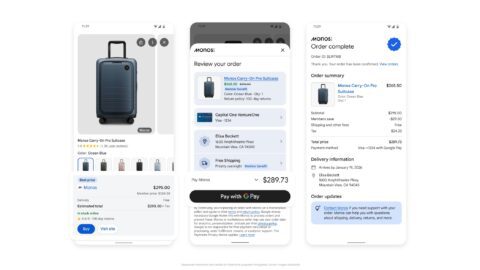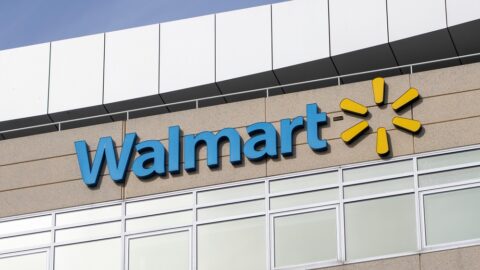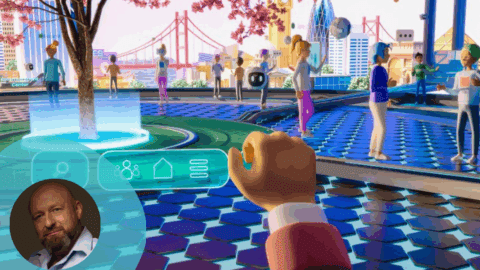College students will likely return to campuses in the fall, and retailers should already be preparing to greet them. This means taking into consideration not just holdover concerns from the pandemic, but what these consumers will demand in the future, according to Barnes & Noble College’s (BNC) College 2030 report.
Retailers have to look at college students’ immediate interests to meet their needs for the remainder of this school year and the start of the next, but they can’t afford to fall behind when planning for what’s just over the horizon. Some of the most important strategies to keep in mind during this time of transition include:
- Meeting post-pandemic needs: College students are expressing many of the same desires as other consumers in the wake of COVID, but retailers need to keep their unique needs in mind and be prepared to quickly shift gears to keep up with evolving shopper behaviors;
- Becoming part of the community: Shoppers in general are becoming more aware of retailers’ place in their communities and associated responsibility, and colleges in particular present both challenges and opportunities in connecting with students; and
- Embracing next-gen technology: Colleges will always be home to the youngest, most tech-savvy shoppers around, so retailers need to start embracing technology like augmented reality (AR) and thinking about the potential of tools like 3D printing — or risk getting left behind.
Convenience and Comfort Take Priority Post-COVID
Often cash-strapped students’ strongest driver when choosing where to shop, particularly online versus in-store, has lingered from pre-pandemic days: good promotions and discounts. This top driver was followed by a growing demand for getting products faster, a trend familiar to any retailer that has been paying attention to the post-COVID landscape.
“We’ve all dealt with the experience of long delivery times, and that is still a pain point for students,” said Ken Wincko, VP of Marketing at BNC in an interview with Retail TouchPoints. “Certainly there is safety and those kinds of factors, but convenience is absolutely critical when choosing a retailer. It’s one of the three things we say are really important to delivering an exceptional experience at BNC: convenience, comfort and connection.”
The requirements for actually meeting these three needs, however, are constantly shifting, and keeping up requires a great deal of flexibility, according to Wincko. For instance, safety is currently college students’ third-largest desire when shopping, but that will quickly drop as vaccination rates climb — and retailers will need to find new ways to deliver on comfort. One method used by BNC is creating mini pop-ups during stressful times, like finals, to offer an extra outlet for relief.
Convenience is likewise changing. The pandemic has brought curbside pickup to the forefront, but subscription services can cut friction even further. College life is fairly regimented, so planning ahead to get what you need, when you need it, makes perfect sense for students.
Colleges are Communities, So Understand Them Well
Connection has a special connotation in tight-knit communities like colleges, which can present a particular challenge for retailers. There is no one-size-fits all approach to maintaining appeal across different campuses, since each university has its own demographics and history. However, retailers that take the time to learn about their local university will gain a serious advantage over the competition.
Luckily, there is one baseline every retailer can rely on across colleges: corporate responsibility, particularly social and environmental causes. These are increasingly popular among all shoppers, but college students tend to be particularly tuned in, and they will turn to retailers who openly support good works. However, they are also even sharper than everyday consumers when it comes to spotting companies that espouse big ideas without following through.
“Students are big advocates and believe in change,” said Wincko. “If you focus on how you are supporting those causes that are important to them, it’ll come back to help you as a brand. But it’s got to be authentic — they can see, very quickly, if you’re doing it for the wrong reasons.”
Taking community involvement to the next level takes more work and requires retailers to think on a campus-by-campus basis. Look into local traditions, tastes and events, and take part whenever possible. For instance, BNC holds jazz and Mardi Gras-themed events at New Orleans’ Tulane University, which are a big hit there but might seem out of place outside of the Big Easy.
Perhaps the most difficult part is understanding all the stakeholders in a given college community. Students are the most obvious shoppers, but they are only a portion of a potential college customer base, which can include alumni, parents and even faculty and staff. Reaching other demographics may require a different approach.
“Looking at the college market, retailers really [need to] take that extra step and gain that extra level of understanding of the needs of those campus communities,” said Wincko. “Then you have the various factions within those communities. So you’ve got the experience that we try to create for students, which is obviously very different than [experiences for] alumni and parents — it’s very different levels of engagement, just because of just who they are.”
College Students Appreciate Tech, so Become an Early Adopter
College students, like all younger consumers, tend to be early adopters of new technology. Retailers looking to serve them need to keep on top of the latest friction-busting capabilities. The impact of this is already being felt with data: younger shoppers are more willing to share their information, but they expect hyperpersonalization in return.
AR is another promising technology with growing popularity among young adopters. Wincko cited women’s wear retailer eShakti as a leader in this area — the brand harnesses AR to let shoppers customize each piece of clothing right from the preview page, ensuring they get exactly the look they want. In the future, 3D printing may take this to the next level, by letting shoppers not just design their purchase but produce it immediately.
“If you think about 3D printing, that’s not just for academic materials or educational tools but also for the retail side,” said Wincko. “When a customer customizes a shirt, you might not need to carry that inventory hanging on a rack, they might be able to just go to a digital kiosk and say, ‘Okay, I want to design it myself and then to be able to 3D print it right there.’ That’s the kind of application, in terms of experiential retail, that we think is going to become more pervasive.”
Wincko expects other convenient technologies to catch on as well. Mobile wallet use already is highest among younger shoppers, and cashierless checkout in particular is a perfect match for busy college students. Retailers need to keep an eye out for technology that appeals to youth in general, then figure out how it can benefit their own operations.













